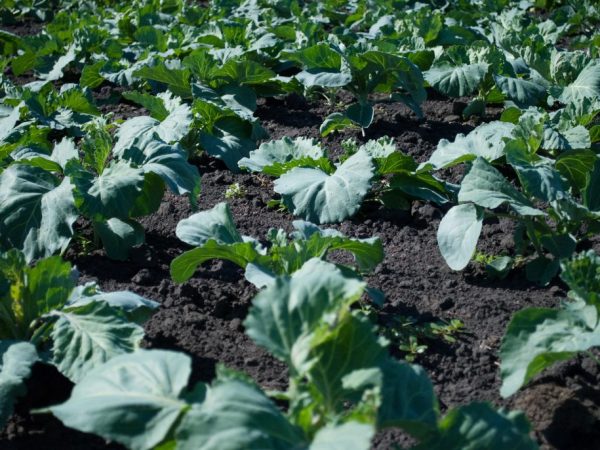Characteristics of Zenon cabbage
Zenon F1 cabbage is a hybrid of late-ripening white cabbage. For the first time, the hybrid was bred in Switzerland, the company for the production and supply of seeds - Syngenta. The variety is in demand due to its taste, disease resistance and long shelf life.

Characteristics of Zenon cabbage
Characteristics of the variety
The ripening period of Zenon F1 cabbage is 130-135 days after planting the seedlings in the ground. According to the characteristics, the duration of growing seedlings is 37-42 days. The recommended planting density of seedlings in the open field is 35-40 thousand plants per hectare. The total yield per hectare is 480-715 centners. Shelf life - 8 months.
The culture is resistant to cracking, fusarium, internal punctate necrosis and thrips. Cabbage is suitable for mechanized harvesting and pneumatic cleaning, it tolerates transportation well over long distances.
Head description
Heads of cabbage hybrids have a high dry matter content, have an attractive presentation.
According to the description of Zeno f1 cabbage, the structure of its head is as follows:
- the shape is even, rounded;
- weight from 3 to 5 kg;
- the color is light green, white on the cut;
- leaves are thin, dense.
During storage, Zenon F1 cabbage does not deteriorate for a long time and does not lose its beneficial properties.
Agrotechnics
The technology for growing Zenon hybrids is practically no different from the cultivation of other types of late white cabbage. For cultivation, 2 methods are used: seedling and sowing seeds in open ground.
Sowing seeds for seedlings
Sowing seeds of Zenon white cabbage begins from April 20 to mid-May. Before sowing, prepare the soil: mix the earth and expanded clay. To make the soil more nutritious, it is watered with a solution of "Citovit" or "Humat".
Growing
After sowing the seeds, the boxes with the future seedlings are covered with a film, they should not be watered: the seeds will sink to the bottom and germinate for a long time. The air temperature during the ripening of seedlings should be 20-25 ° C.
It is important to provide the culture with regular lighting. For this, boxes with seedlings are placed on the south side of the room and phytolamps are used.
After the appearance of 2 full-fledged leaves, the seedlings dive. In early June, 37-42 days after sowing, the seedlings are planted in open ground. It is advisable that the part of the area where the cabbage is located is well lit by the sun.
Watering and loosening

Plants need regular watering
Watering should take place regularly every 5 days, in dry periods - every 3 days. The earth must not be allowed to dry out. Before watering, the soil is weeded and loosened, after the seedlings are spud. It is necessary to loosen the soil after each heavy rain to avoid the formation of a dense crust on the soil and provide air access to the root system.
Harvesting
Before the harvest period, 2-3 weeks before, watering is stopped. The collection begins in September. Cabbage can be stored in the garden until the end of October, without spoiling or cracking. It is important to remove it before the frost begins.
Diseases and pests
One of the main positive qualities of hybrids is that they have strong immunity to fizariosis, punctate necrosis and thrips.
Diseases
Often, if the rules for storing cabbage are not followed, plants are prone to damage by white rot. This is facilitated by the high humidity and low temperature in the fruit storage room. White rot damages broken, cracked and frozen plants, it is manifested by the appearance of mucus on the outer leaves of heads of cabbage.
Ways to prevent illness:
- disinfectant treatment of vegetable storage rooms;
- observance of temperature conditions during storage from 0 ° C to 1 ° C;
- careful examination of the condition of the heads of cabbage: infected heads of cabbage must be disposed of.
Pests
Some pests like cabbage:
- leaf beetle;
- baride;
- whitefly;
- cabbage fly;
- wavy flea, etc.
There are chemical and biological agents for pest control.
Chemical preparations are effective, they can quickly rid the plant of insects. Such drugs can harm not only insects, but also the human body after eating the processed fruit.
Biological preparations are harmless, but their effect is much weaker. Processing vegetables with such a preparation takes a long period of time.
Traditional methods of pest control:
- nettle;
- marigold;
- calendula;
- spices.
Placing cabbage near such plants or mulching them can repel various types of insects.
Conclusion
Zenon hybrid is versatile in use, has excellent taste. It does not require much effort and a lot of time for cultivation, it is suitable for farming activities. Cabbage is suitable for pneumatic cleaning and mechanical harvesting, has a long shelf life and strong immunity. It tolerates long-term transportation well.


